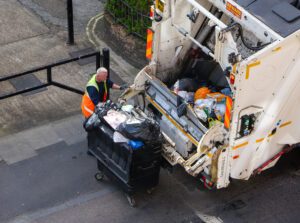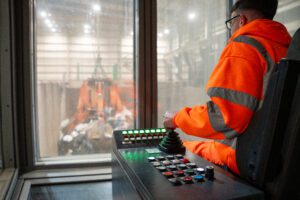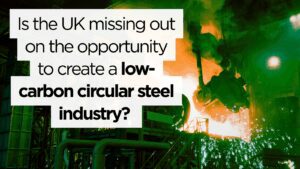The two “C’s” of “carbon and capacity” are the key issues that will determine the future of Refuse Derived Fuel (RDF) exports, according to ESA Executive Director, Jacob Hayler.
Jacob’s comments were made as part of an expert panel discussing The Future of RDF Exports on the Energy, Fuels and Decarbonisation Keynote Stage during the first day of RWM 2024.
The panel included Andy Jones from Totus Environmental, Andrew Howie from Encyclis and Dr Anna Willetts from Gunner Cooke LLP, and was chaired by Mike Brown from Eunomia.
Jacob opened comments in the session by saying that the future role of RDF exports would be determined by measures to reduce carbon emissions associated with residual waste and the availability of domestic capacity to treat it.
He said: “Exports have played a really important role while we haven’t had sufficient Energy-from-Waste capacity, and exports will continue to play a role in the future. It’s really important to have flexibility around planned and unplanned EfW outages and to have RDF exports as a relief valve in that context.
One of the important points around the forthcoming inclusion of waste in the Emissions Trading Scheme (ETS) is preventing carbon leakage or waste tourism, but also leakage back into landfill. The ESA is being very firm with Defra that we want to see a comprehensive landfill ban from 2028 alongside the ETS. We’re also going to need a carbon border adjustment mechanism to ensure that carbon costs are level between domestic treatment and exports.”
On EfW capacity, Jacob said the industry is awaiting publication of a government EfW capacity review but that, from the ESA’s perspective, the pipeline of existing planned capacity was likely to now be sufficient. He added that Landfill Tax fraud was creating a “massive distortion” on the market, with systematic abuse of the system that the authorities needed to “clamp down” on.
The panel discussed the potential impact of an EU emissions trading scheme on RDF exports and how a level playing field could be maintained.
Jacob said: “To a degree, the EU ETS will harmonise the picture among member states, but there are various pitfalls along the way. From the ESA’s perspective, the key is a level playing field with domestic treatment, so there’s a timing issue over the dates that both the UK and EU schemes come into effect. It looks like we could be first, so there’s a real risk to our domestic infrastructure operators during that period without intervention.
Then, once the EU scheme is in place, the balancing act comes down to the price differential and making sure that’s equalised to ensure everyone is on a level footing.”
Responding to an audience question about why material leakage from the UK to the EU could be considered a risk rather than just market forces, Jacob said: “There is an environmental impact if there’s also carbon leakage which avoids domestic obligations to reduce carbon. As an industry, we are trying to maximise the value of waste material here in the UK, and energy generation and heat production are important elements of this.”
Responding to criticism that the availability of EfW and ability to “mass burn” materials was undermining a waste hierarchy approach, Jacob said: “Lacklustre performance on recycling over the last ten years is a failure of recycling policy, not because EfW is seeking to avoid a waste hierarchy approach.
Although there remains some question marks around the efficacy of EPR and DRS, in the longer term we have a clear trajectory on recycling and committed targets, but reaching 65 per cent recycling is ambitious and, even meeting that target, EfW will continue to serve an important function.
We would, however, like to see the ETS structured in a way that encourages removal of more plastic from EfW feedstocks, which will mostly be achieved through better plastic recycling – but there will likely be some urban areas where pre-treatment and extraction might be necessary and encouraged through the ETS.”
ENDS




